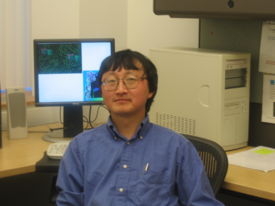Pan:What we do

Research Summary
Our research focuses on functional genomics of tRNA, RNA epigenetics and RNA folding.
tRNA is essential for protein synthesis and life. Biological genomes contain up to several hundred tRNA genes. Translational regulation is related to the dynamic properties of each tRNA that constantly change to facilitate stress response and cellular adaptation to new environments and to control gene expression in differentiated organisms. We have developed tRNA microarrays that measure the abundance and the fraction of aminoacylation of each tRNA. Using these microarray technologies, we are exploring the effect of varying tRNA concentration and aminoacylation fraction on translation in bacteria and in cancer cells.
Over 100 chemical types of post-transcriptional modifications have been identified in thousands of sites in RNAs from bacteria to man. They include methylation of bases and the ribose backbone, rotation and reduction of uridine, base deamination, elaborate addition of ring structures and carbohydrate moieties, and so on. RNA modification enzymes represent 1-2% of all genes in bacteria. Hundreds of guide RNAs and dozens of proteins are used to direct modifications in eukaryotic rRNAs. RNA modifications are involved in stress response, environmental adaptation, antibiotic resistance and human neurology. We are working on a general microarray method that will detect and quantify the extent of modifications in any RNA. We are applying this high throughput, microarray method to study the function of RNA modifications at the genomic level during cell growth, adaptation and development.
The goals of RNA folding are to understand how RNA folds into defined structures and how RNA structures are stabilized. We use a wide array of biophysical, structural and biochemical methods to elucidate the principles RNA folding and stability. Folding during transcription is also studied to mimic RNA folding in the cell.
Main | What we do | Who we are | Publications | Protocols | Links | Contact us